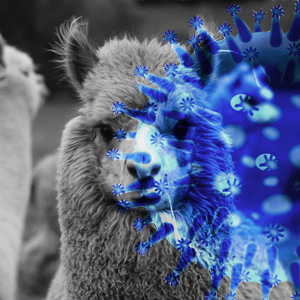Linking llamas to COVID-19 candidate drug
August 30, 2021

A University of Minnesota News Release, "Learning from llamas, U of M scientists develop a candidate COVID-19 drug," recently highlighted the work of VBS Professor Fang Li, global leader in SARS-CoV-2 research, who along with Dr. Aaron LeBeau, University of Wisconsin; Gang Ye-Postdoctoral researcher, UMN; and Joseph Gallant, graduate student, UMN, as well as several other university researchers, made significant headway by linking llamas to the potential prevention and ending of SARS-CoV-2 infection in animals.
The COVID-19 pandemic has significantly impacted the global human population since 2019. The candidate drug is called Nanosota-1, which was derived from a tiny antibody called a nanobody taken from llamas. Li explains, “Llamas are amazing animals. They produce a unique type of antibodies that can serve as excellent therapeutics for humans.” A key benefit of Nanosota-1 is that, unlike conventional antibody drugs under development, this drug can be produced at high yields and remains stable across wide temperature ranges—making it cost-effective to manufacture, transport, and store.
The drug has been tested in hamsters and mice and is one of the first nanobody therapeutics to show promise as a potential candidate to be validated in human trials. The findings of this research were mapped out in the scientific paper, "The development of Nanosota-1 as anti-SARS-CoV-2 nanobody drug candidates," published in eLife. This study was funded by the National Institutes of Health with additional funding from the University of Minnesota.